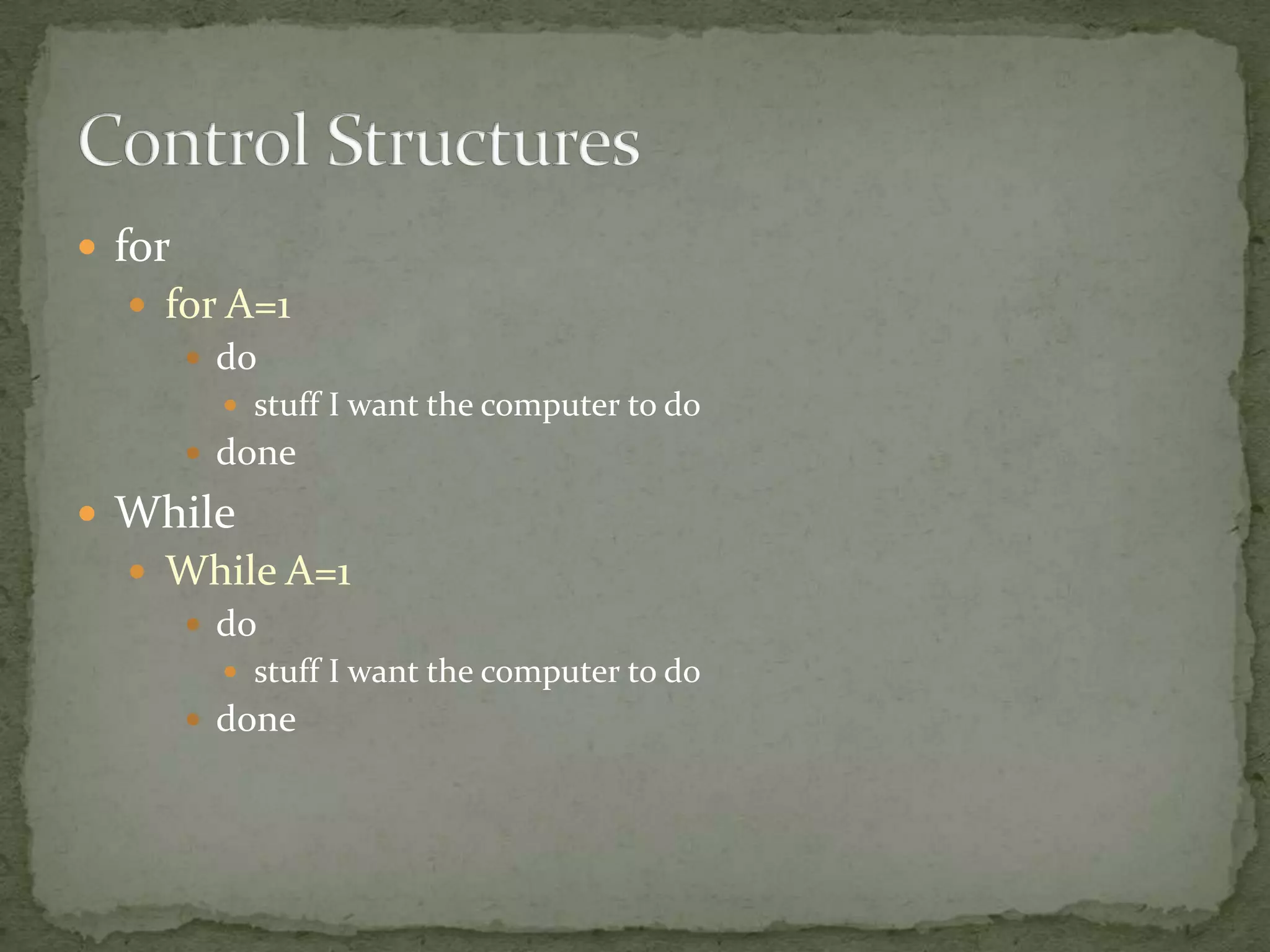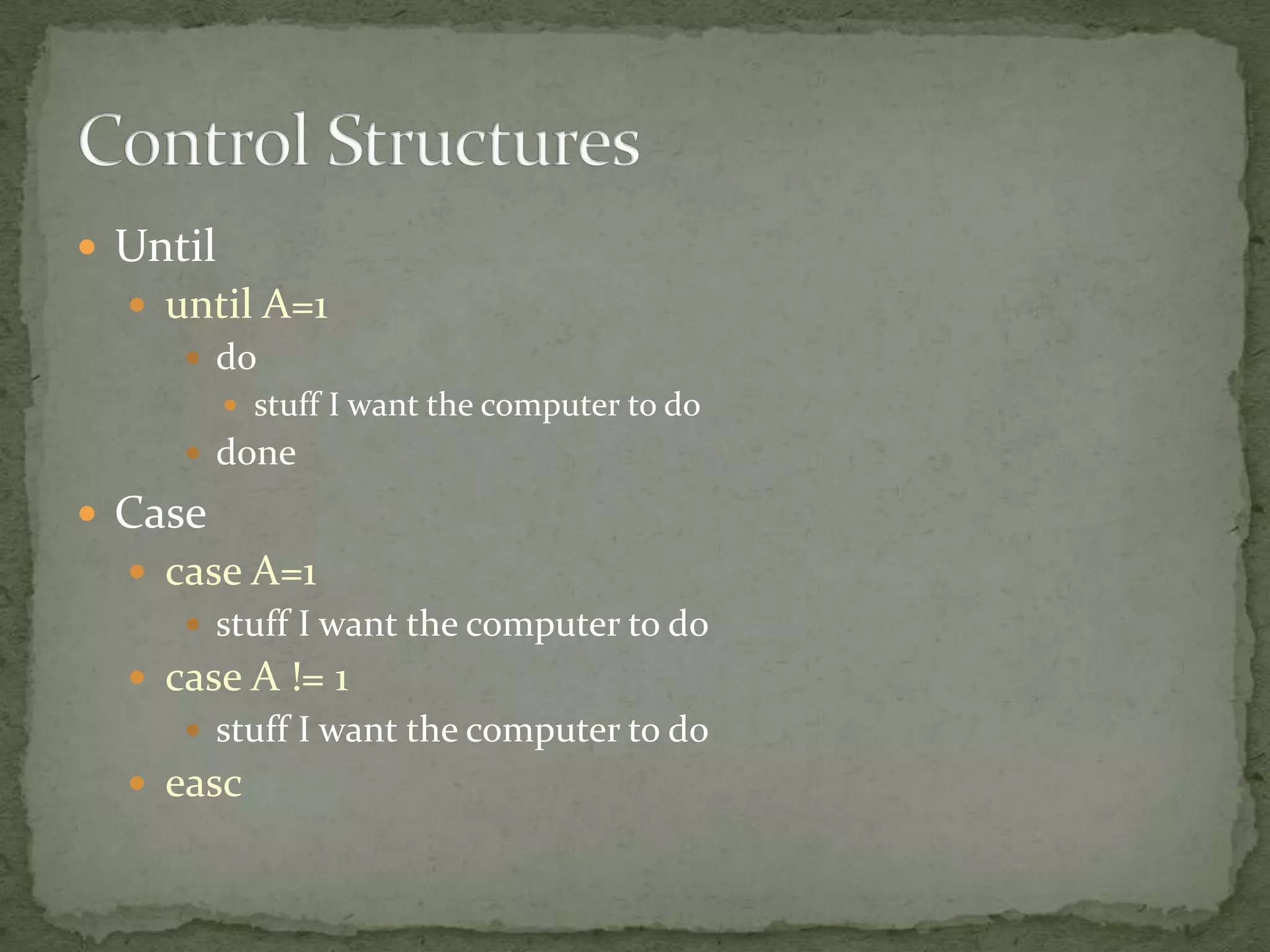The document provides an overview of common Linux commands and their functions, such as RMDIR to remove empty directories, CHMOD to change file permissions, GREP for pattern matching, FIND to locate files, ECHO to output text, and MORE to view files page by page. It also covers operators like pipes, logical operators, redirection, and command substitution. The document concludes with descriptions of conditional statements like IF/THEN, FOR, WHILE, UNTIL, and CASE that allow scripts to perform actions conditionally.
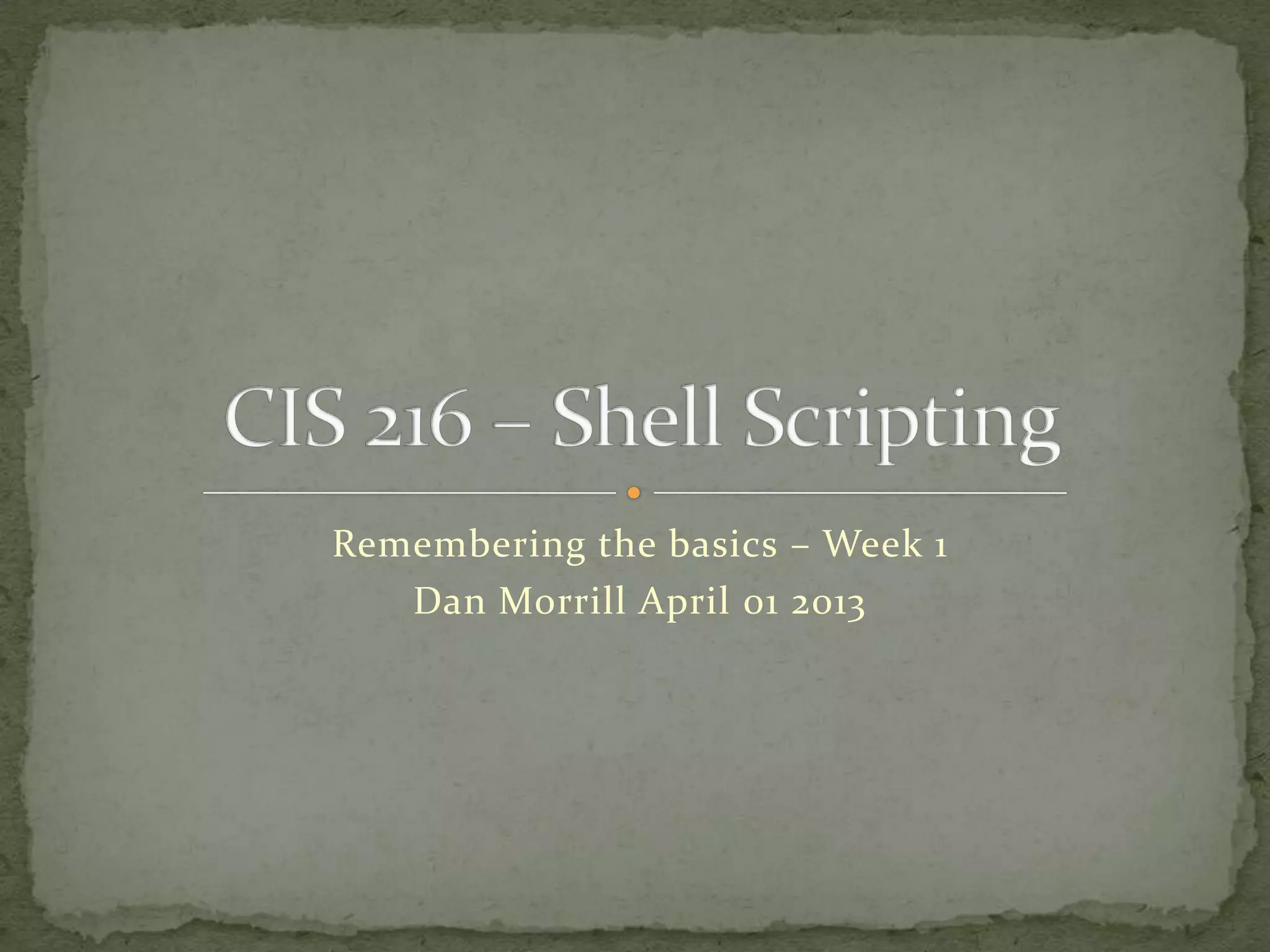
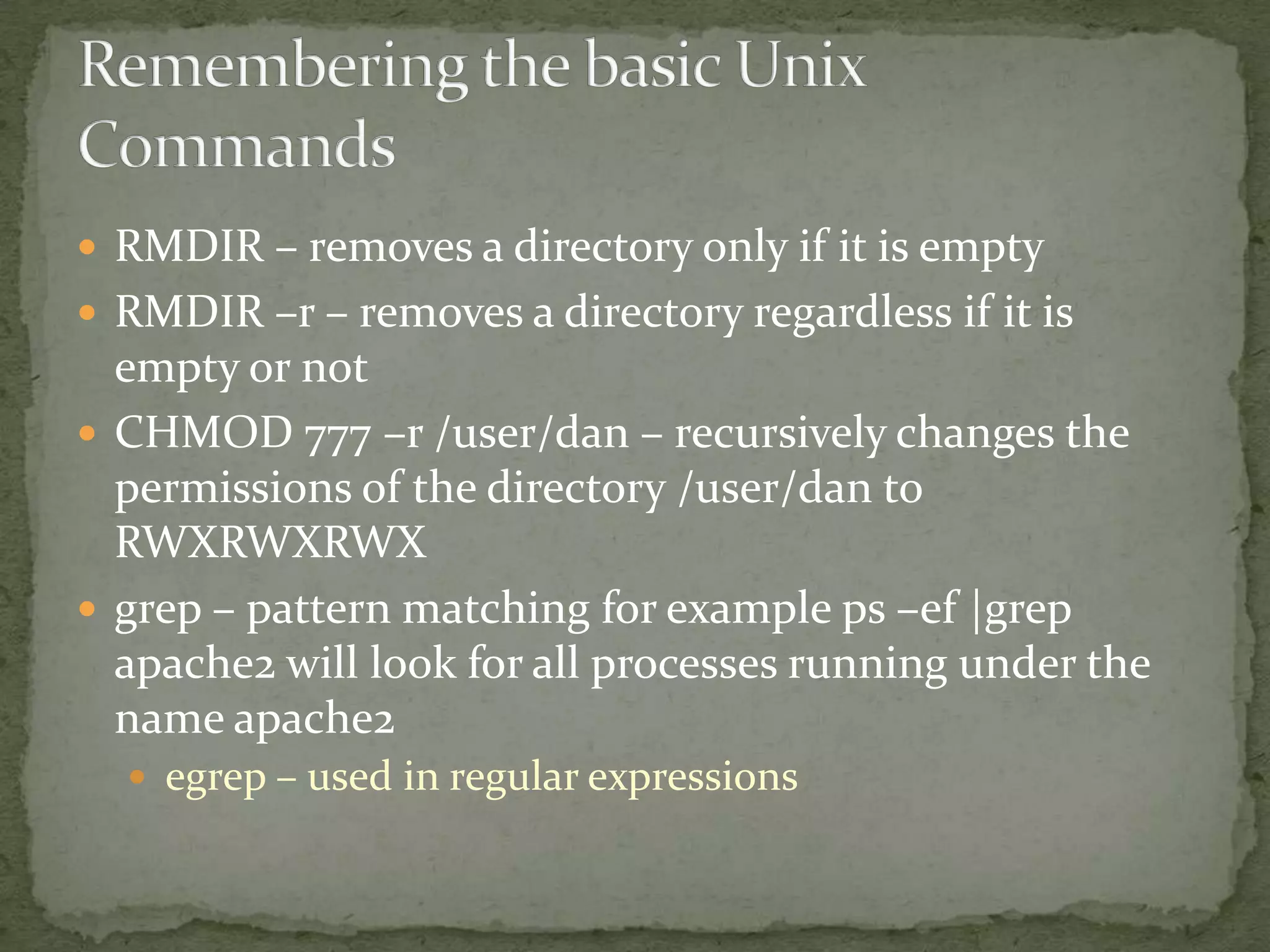
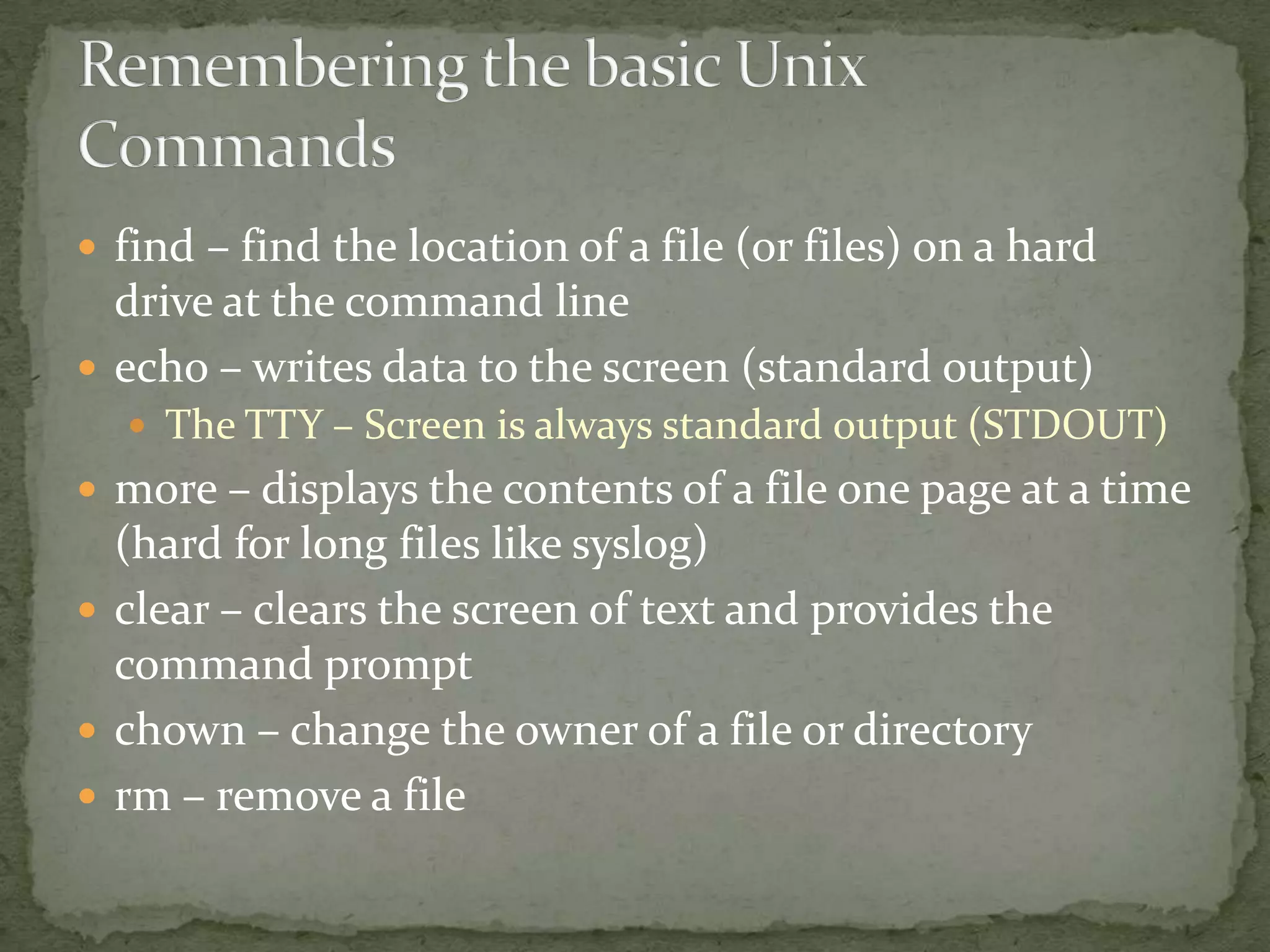
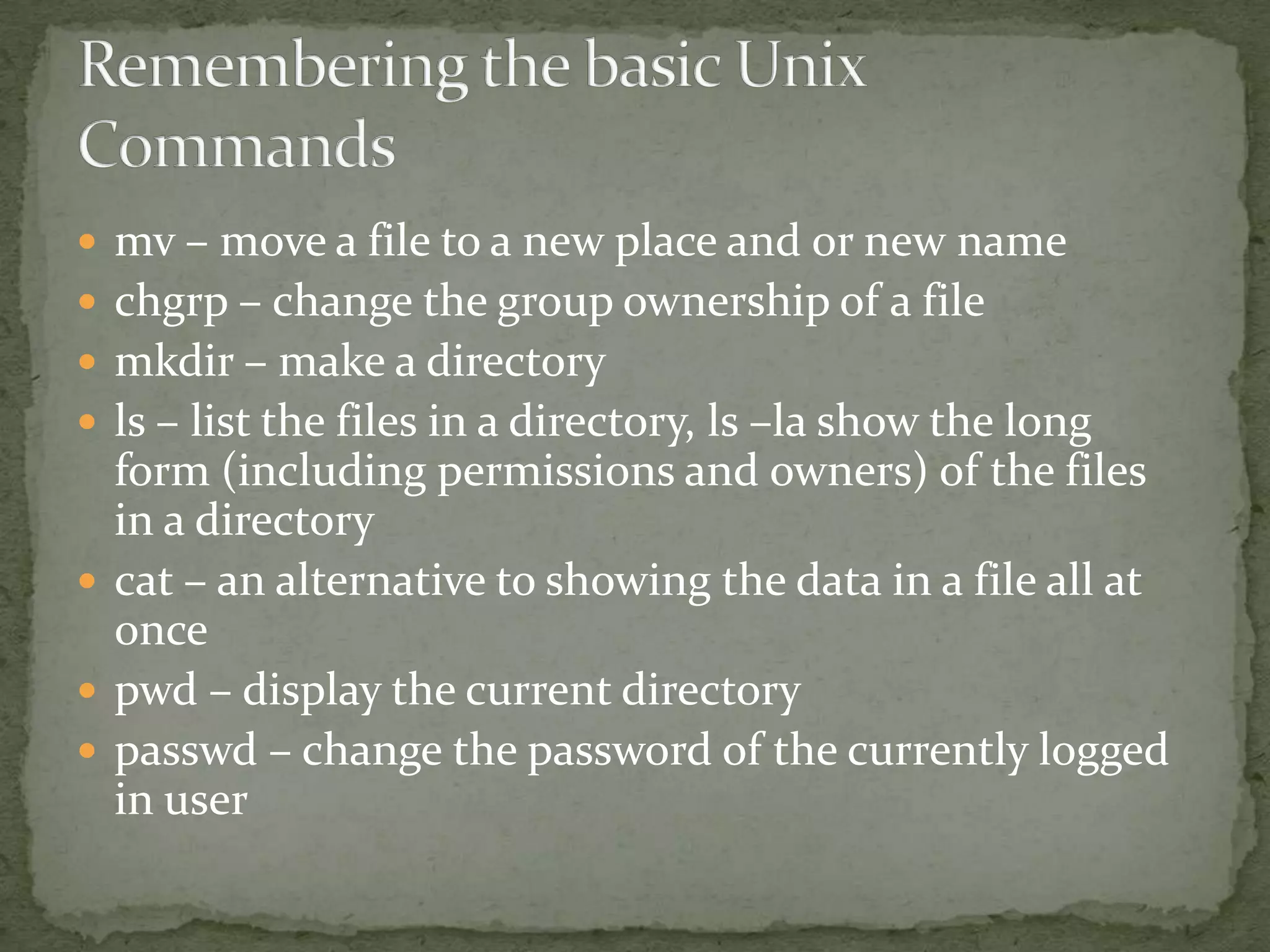
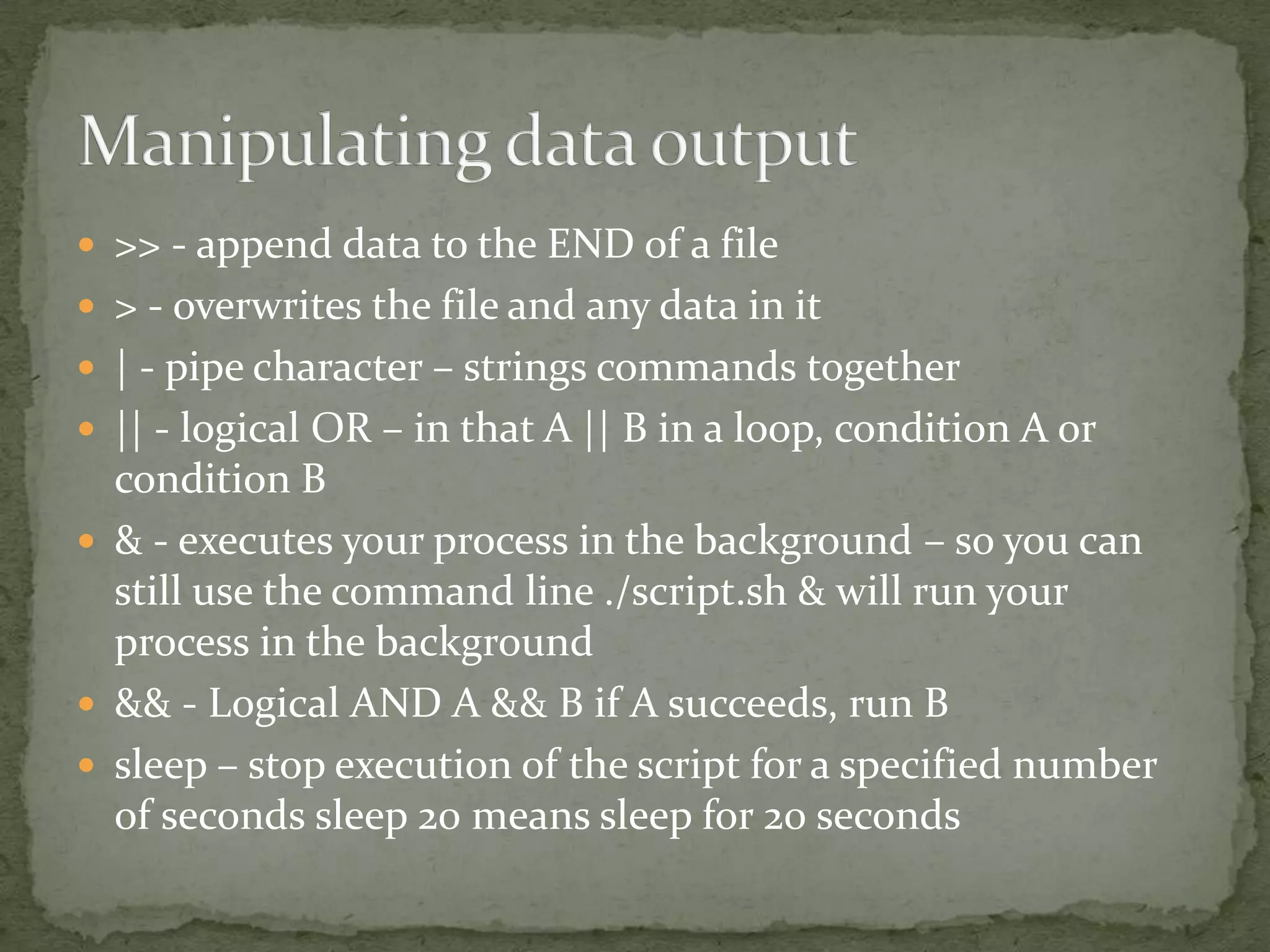
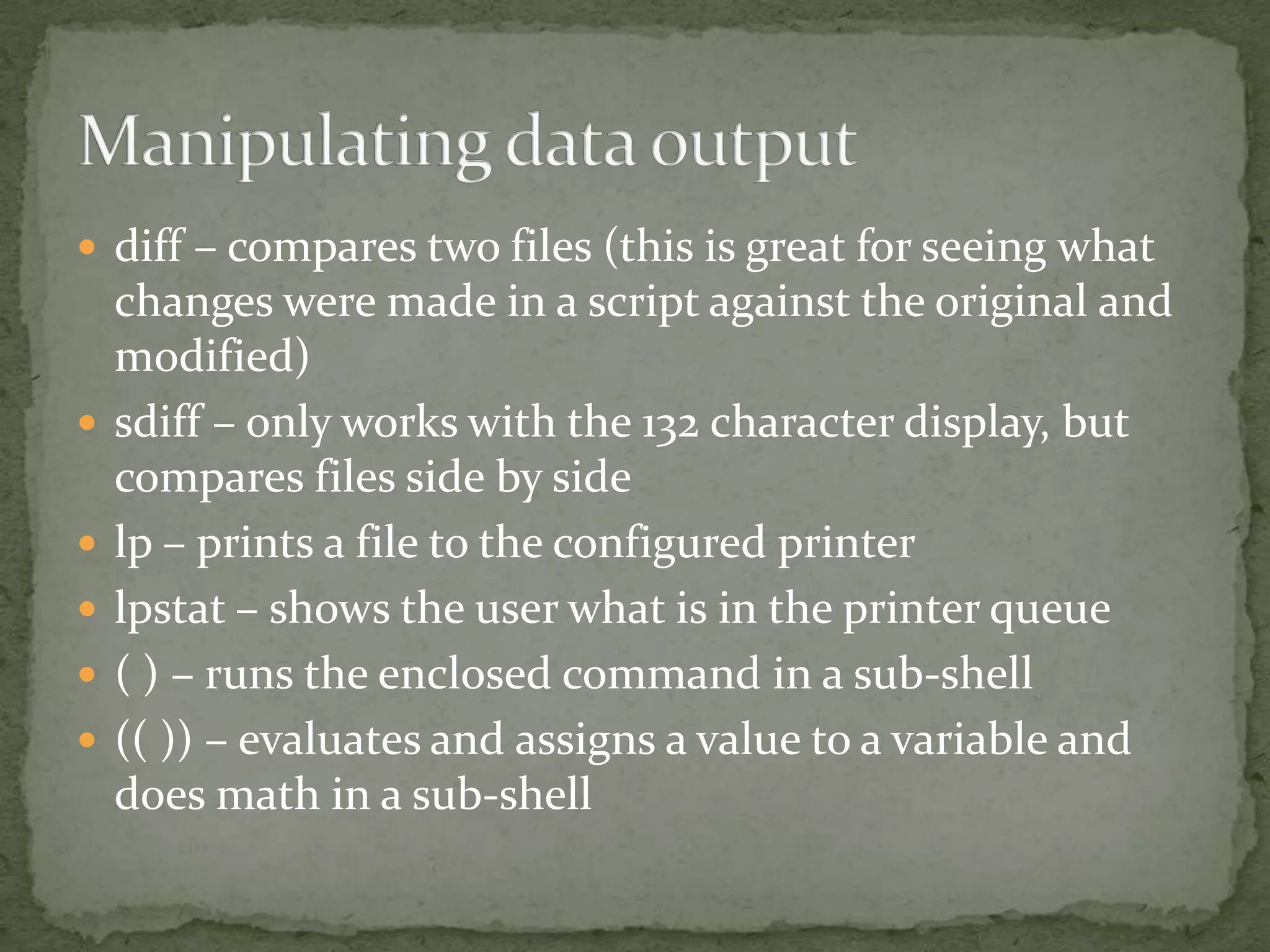
![ $(( )) – evaluates the enclosed expression
[ ] – test an expression to see if it is true or false
< > - used to compare values or strings
$( ) – command substitution – great when doing
logical OR’s or AND’s](https://image.slidesharecdn.com/cis216shellscripting-130401103032-phpapp01/75/Cis-216-shell-scripting-7-2048.jpg)
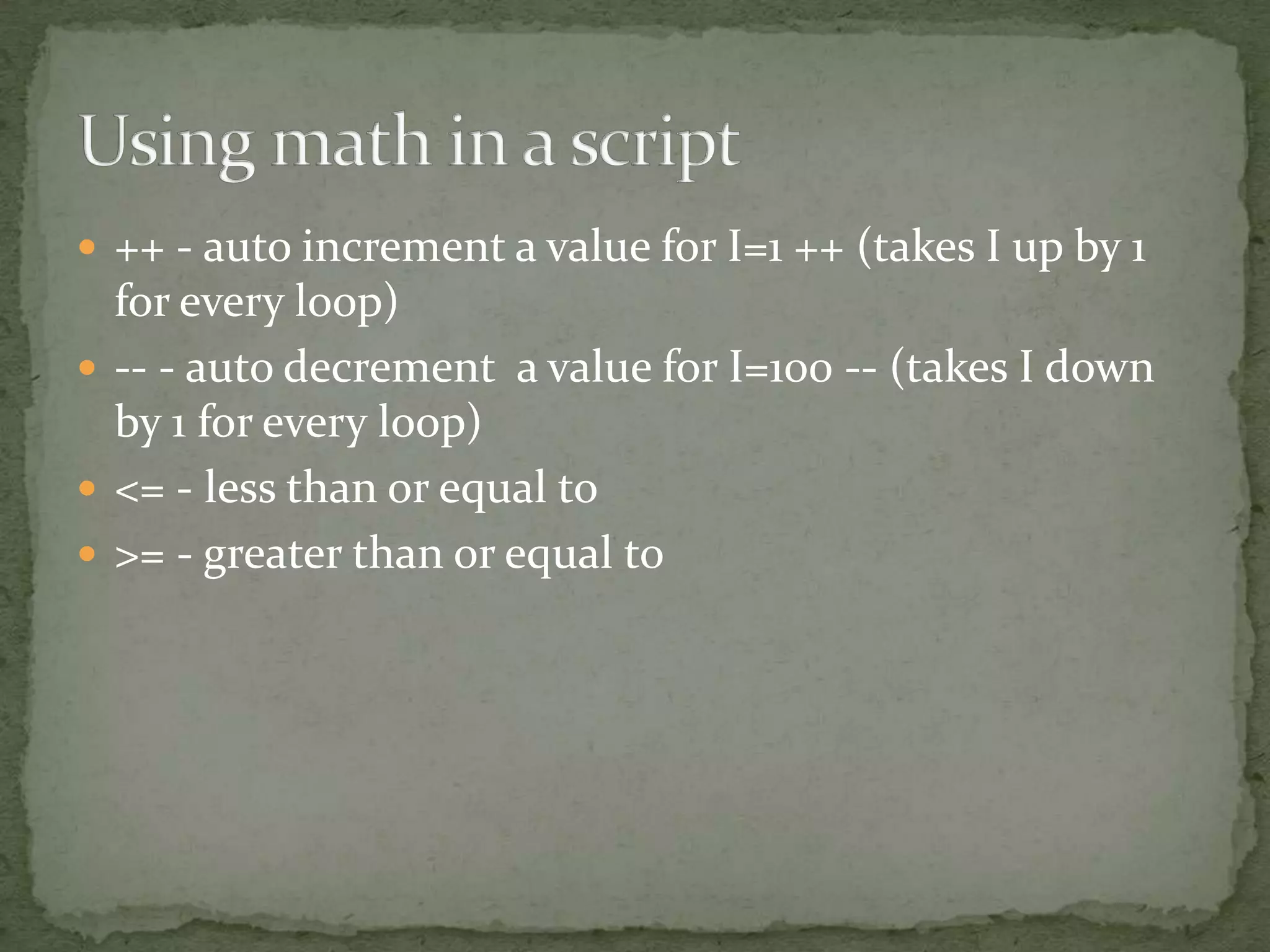
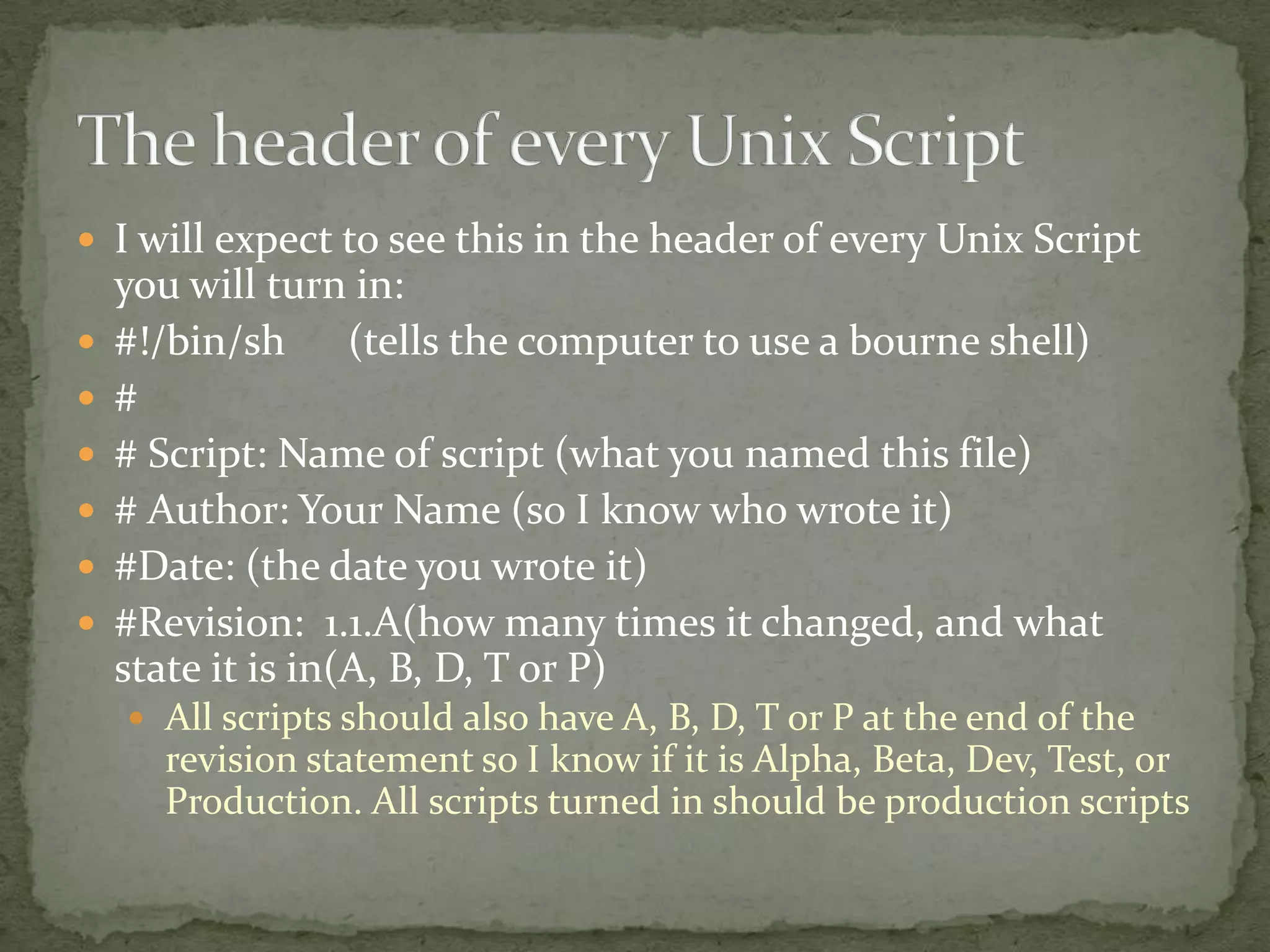
![ How to get your script to do more useful stuff
If. Then
if [test]
Then
stuff I want the computer to do
fi
If. Then. Else
if [test]
Then
stuff I want the computer to do
Else
Stuff I want the computer to do if the first condition didn’t happen
fi](https://image.slidesharecdn.com/cis216shellscripting-130401103032-phpapp01/75/Cis-216-shell-scripting-10-2048.jpg)
